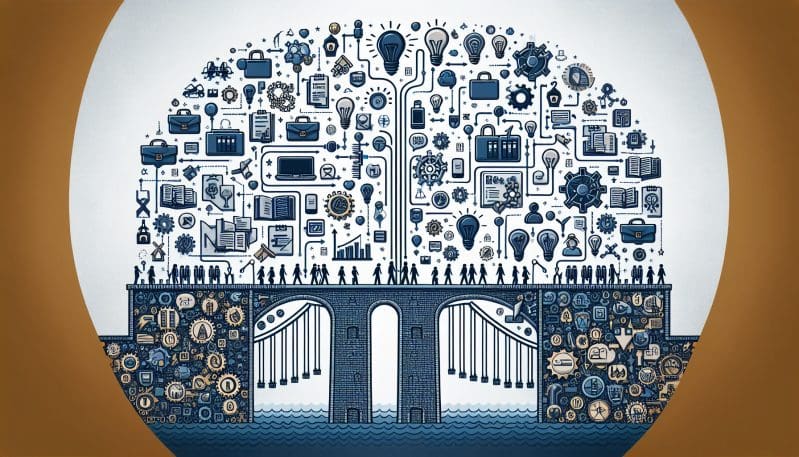Bridging the Skills Gap: Innovative Approaches to Lifelong Learning in the Workforce
- Home
- Bridging the Skills Gap: Innovative Approaches to Lifelong Learning in the Workforce

- Editors Desk
- January 11, 2024
- 0 Comments
As the global economy continues to navigate the turbulent waters of technological innovation and economic shifts, the workforce is often caught in the crosshairs of rapid change. With industries evolving at lightning speeds, workers around the world face the daunting prospect of their skills becoming outdated or even obsolete. The widening chasm between existing skills and those required for the jobs of tomorrow is a pressing concern that calls for immediate and decisive action. In this critical context, ‘No Worker Left Behind’ emerges not only as a rallying cry but also as a foundational principle for the future of work.
The primary responsibility for addressing the skills gap lies with a triad of key players: employers, governments, and educational institutions. Employers, recognizing that an agile and adept workforce is a competitive advantage, must take the lead in identifying emerging skill needs and providing training opportunities tailored to these demands. By fostering a culture of continuous learning and self-improvement, companies can create an environment where workers feel supported in their journey towards personal and professional growth.
Governments, on the other hand, play a pivotal role in setting the policy landscape that incentivizes lifelong learning. Through funding initiatives, tax benefits, and regulatory frameworks that encourage upskilling, governments can help to level the playing field, ensuring that all citizens, regardless of their socioeconomic status, have equal access to opportunities for growth.
Educational institutions, as the traditional bastions of learning, must break free from the confines of convention and embrace a more dynamic approach to education. By forging partnerships with industry and updating curricula to reflect the skills in demand, these institutions can remain relevant and provide a stream of workforce-ready individuals who are equipped to tackle the challenges of the new economy.
One of the most promising developments in the quest to bridge the skills gap is the rise of innovative lifelong learning initiatives. Case studies from around the world show that when stakeholders work together, the results can be transformative. For instance, the partnership between IBM and community colleges in the United States to create custom curriculums for technology fields is preparing thousands for high-demand jobs. Similarly, Singapore’s SkillsFuture initiative offers all citizens credits to pursue approved courses, reflecting a state-level commitment to continuous education.
Technology, too, plays a vital role in democratizing access to education. Online platforms, digital tools, and e-learning resources have made it possible for individuals to learn at their own pace and on their own terms. This has been particularly beneficial for those who might not have the means or ability to attend traditional classroom settings, providing a lifeline for continuous skill enhancement.
At ‘No Worker Left Behind,’ we embody the belief that no individual should be denied the chance to remain an active and valued member of the workforce. Our mission is to advocate for policies and practices that support a culture of lifelong learning, and to facilitate collaboration among different stakeholders to create an ecosystem where upskilling is not only accessible but also deeply valued.
By championing the cause of the worker, the workplace, and work itself, we aim to ensure that every individual has the tools and opportunities to adapt and thrive in an ever-changing landscape. It is only through joint efforts and a shared vision that we can truly say we’ve left no worker behind.
Let us come together to build a future where continuous learning is not the privilege of a few but the right of every worker. Because in the face of relentless change, only those armed with knowledge, skills, and an unyielding will to learn can navigate the path to success and fulfillment in the workforce of tomorrow.

Leave A Comment